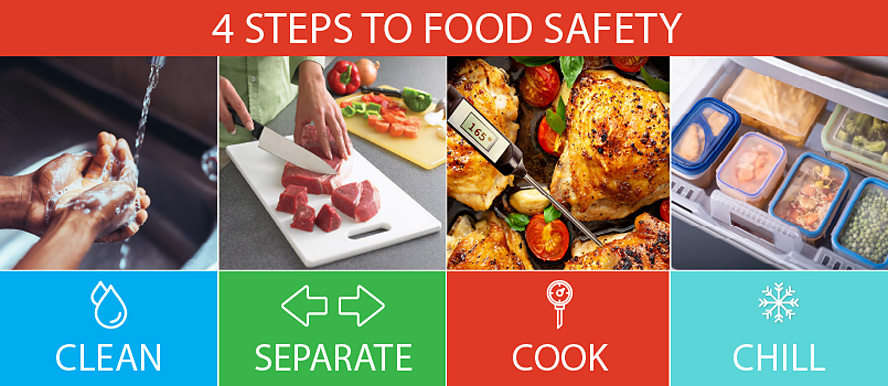No
Who is at risk of a foodborne illness?
Everyone is at risk of getting a foodborne illness. However, some people are at a greater risk of becoming seriously ill or even dying from a foodborne illness:
- Infants
- Young children
- Pregnant women and their unborn babies
- Older adults
- People with chronic disease and/or weakened immune systems
What can you do to protect yourself from foodborne illness?
A few simple steps can reduce the risk of foodborne diseases:
Clean
- Wash your hands for at least 20 second with soap and water.
- Wash surfaces and utensils after each use.
- Wash fruits and vegetables, but not meat, poultry or eggs.
Separate
- Avoid cross-contaminating foods.
- Use separate cutting boards and plates for produce, meat, poultry, seafood, and eggs.
Cook
- Cook meat, poultry and eggs thoroughly.
- Use a thermometer to measure the internal temperature of meat. A meat thermometer is a good way to be sure that you cooked meat enough to kill bacteria. Visit FoodSafety.gov for safe and proper cooking temperatures.
Chill
- Refrigerate leftovers immediately. Bacteria can grow quickly at room temperature, so refrigerate leftover foods if no one will eat them within 2 hours.
- For large volumes of food, split them into several shallow containers. When you refrigerate them, they will cool more quickly.

Other Resources